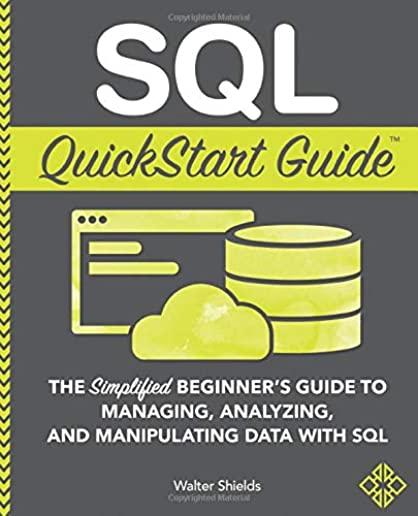MD-101: MANAGING MODERN DESKTOPS Training in Port St. Lucie
Special Offers, Deals & Discounts
Software Assurance Training Vouchers AcceptedCall for Details: 303.377.6176 |
||
|
We offer private customized training for groups of 3 or more attendees.
|
||
Course Description |
||
| In this course, students will learn how to plan and implement an operating system deployment strategy using modern deployment methods, as well as how to implement an update strategy. Students will be introduced to key components of modern management and co-management strategies. This course also covers what it takes to incorporate Microsoft Intune into your organization. Students will also learn about methods for deployment and management of apps and browser-based applications. Students will be introduced to the key concepts of security in modern management including authentication, identities, access, and compliance policies. Students will be introduced to technologies such Azure Active Directory, Azure Information Protection and Windows Defender Advanced Threat Protection, as well as how to leverage them to protect devices and data.
Course Length: 4 Days
Course Tuition: $1685 (US) |
||
Prerequisites |
|
| The Modern Desktop Administrator must be familiar with M365 workloads and must have strong skills and experience of deploying, configuring, and maintaining Windows 10 and non-Windows devices. The MDA role focuses on cloud services rather than on-premises management technologies. It is recommended students complete course MD-100, Windows 10, prior to taking this course. | |
Course Outline |
|
Module 1: Planning an Operating System Deployment Strategy This module explains how to plan and implement a deployment strategy. Students will learn about the concepts of supporting the desktop through it’s entire lifecycle. This module also covers assessing an existing environment and the tools used to prepare a deployment strategy. Finally, students will be introduced to the tools and strategies used for desktop deployment. Lessons
Lab : Practice Lab – Planning Windows 10 deployment After completing this module, students will be able to:
Module 2: Implementing Windows 10 This module covers the modern methods of Windows deployment used in common scenarios such as upgrading and migrating to Windows 10, as well as deploying new devices and refreshing existing devices. Students will also learn about alternate methods of OS deployment as well as considerations when choosing methods of deployment. Lessons
Lab : Practice Lab – Implementing Windows 10
After completing this course, learners should be able to:
Module 3: Managing Updates for Windows 10 This module covers managing updates to Windows. This module introduces the servicing options for Windows 10. Students will learn the different methods for deploying updates and how to configure windows update policies. Finally, students will learn how to ensure and monitor update compliance using Windows Analytics. Lessons
Lab : Practice Lab – Managing Updates for Windows 10
After completing this module, students will be able to:
Module 4: Device Enrollment In this module, students will examine the benefits and prerequisites for co-management and learn how to plan for it. This module will also cover Azure AD join and will be introduced to Microsoft Intune, as well as learn how to configure policies for enrolling devices. The module will conclude with an overview of device inventory in Intune and reporting using the Intune console, Power BI and Microsoft Graph. Lessons
Lab : Practice Lab – Device Enrollment and Management After completing this module, students will be able to:
Module 5: Configuring Profiles This module dives deeper into Intune device profiles including the types of device profiles and the difference between built-in and custom profiles. The student will learn about assigning profiles to Azure AD groups and monitoring devices and profiles in Intune. The module will conclude with an overview of using Windows Analytics for health and compliance reporting. Lessons
Lab : Practice Lab – Managing profiles After completing this module, students will be able to:
Module 6: Application Management In this module, students learn about application management on-premise and cloud-based solutions. This module will cover how to manage Office 365 ProPlus deployments in Intune as well as how to manage apps on non-enrolled devices. The module will conclude with an overview of Enterprise Mode with Internet Explorer and Microsoft Edge and tracking your installed applications, licenses, and assigned apps using Intune. Lessons
Lab : Practice Lab – Managing Applications After completing this module, students will be able to:
Module 7: Managing Authentication in Azure AD In this module, students well be introduced to the concept of directory in the cloud with Azure AD. Students will learn the similarities and differences between Azure AD and Active Directory DS and how to synchronize between the two. Students will explore identity management in Azure AD and learn about identity protection using Windows Hello for Business, as well as Azure AD Identity Protection and multi-factor authentication. Lessons
Lab : Practice Lab – Managing objects and authentication in Azure AD After completing this module, students will be able to:
Module 8: Managing Device Access and Compliance In this module, students will be introduced to managing device security. The module will cover securely accessing corporate resources and introduce concepts such as Always On VPN and remote connectivity in Windows 10. Students will learn how to create and deploy compliance policies and use compliance policies for conditional access. The module concludes with monitoring devices enrolled in Intune. Lessons
Lab : Practice Lab – Managing Access and Compliance After completing this module, students will be able to:
Module 9: Managing Security In this module, students will learn about data protection. Topics will include Windows & Azure Information Protection, and various encryption technologies supported in Windows 10. This module also covers key capabilities of Windows Defender Advanced Threat Protection and how to implement these capabilities on devices in your organization. The module concludes using Windows Defender and using functionalities such as antivirus, firewall and Credential Guard. Lessons
Lab : Practice Lab – Managing Security in Windows 10 After completing this module, students will be able to:
|
Course Directory [training on all levels]
- .NET Classes
- Agile/Scrum Classes
- AI Classes
- Ajax Classes
- Android and iPhone Programming Classes
- Azure Classes
- Blaze Advisor Classes
- C Programming Classes
- C# Programming Classes
- C++ Programming Classes
- Cisco Classes
- Cloud Classes
- CompTIA Classes
- Crystal Reports Classes
- Data Classes
- Design Patterns Classes
- DevOps Classes
- Foundations of Web Design & Web Authoring Classes
- Git, Jira, Wicket, Gradle, Tableau Classes
- IBM Classes
- Java Programming Classes
- JBoss Administration Classes
- JUnit, TDD, CPTC, Web Penetration Classes
- Linux Unix Classes
- Machine Learning Classes
- Microsoft Classes
- Microsoft Development Classes
- Microsoft SQL Server Classes
- Microsoft Team Foundation Server Classes
- Microsoft Windows Server Classes
- Oracle, MySQL, Cassandra, Hadoop Database Classes
- Perl Programming Classes
- Python Programming Classes
- Ruby Programming Classes
- SAS Classes
- Security Classes
- SharePoint Classes
- SOA Classes
- Tcl, Awk, Bash, Shell Classes
- UML Classes
- VMWare Classes
- Web Development Classes
- Web Services Classes
- Weblogic Administration Classes
- XML Classes
- RED HAT ENTERPRISE LINUX SYSTEMS ADMIN II
8 December, 2025 - 11 December, 2025 - Fast Track to Java 17 and OO Development
8 December, 2025 - 12 December, 2025 - Introduction to Spring 6, Spring Boot 3, and Spring REST
15 December, 2025 - 19 December, 2025 - Python for Scientists
8 December, 2025 - 12 December, 2025 - See our complete public course listing






